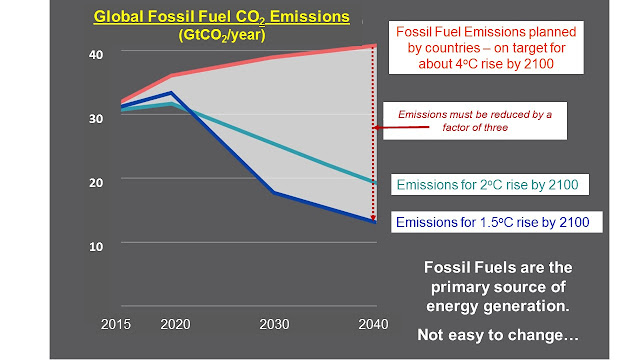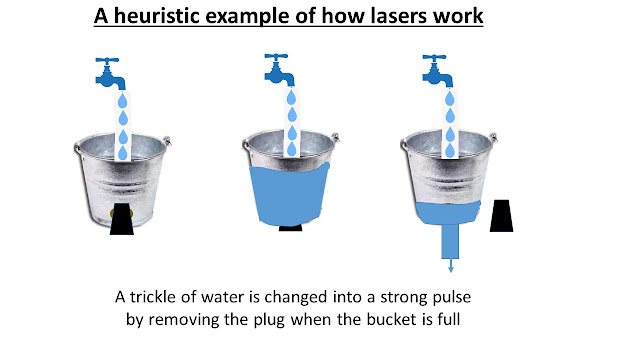Index of Blogs and Courses
Humans are fundamentally, and to a significant extent irreversibly, changing the diversity
of life on Earth, and most of these changes
represent a loss of biodiversity
Humans are but a small part of living organisms on Earth which supports a huge variety of organic life almost exclusively based on compounds of carbon. Over billions of years, natural selection (evolution) has fine-tuned the living ecosystem and maintains it in some sort of quasi-equilibrium. In ancient times, no living organism had the power and means to disturb the evolutionary processes. Homo sapiens, since the agricultural revolution 10,000 years ago but more notably in the past 50 years, have increasingly been able to affect natural processes that support the large biodiversity on the planet. Such changes have been rapid and largely unplanned, driven by the demands of exponentially increasing human population and consumption. We are now living in the new epoch; the Anthropocene.
Much of the human activity has been detrimental to the health of the ecosystem - the loss in biodiversity is one of the many indicators of the damage being done to the Earth's ecosystem. This has serious implications for the future well-being of the human race. The present publication deals with the continuing loss of biodiversity that has been happening over the past few centuries.
There seems to be much misunderstanding about the relevance of biodiversity in our lives; an oft asked question is - why should we worry about loss of biodiversity? I shall address this in the following but let me first explain what biodiversity is:
What is Biodiversity? - Biodiversity is the amazing variety of life at all levels, from microscopic to very large. All organic life on Earth is based on carbon which is ~12% of the biomass. To make sense of the variety of life, organisms are classified in different groups (taxonomy). The following slides detail the global distribution of biomass with particular emphasis on human taxonomy: (Click on a slide to see full page image)
Humans (homo sapiens) belong to the animal kingdom. Animal kingdom (2 giga tons carbon) is a tiny part of the global biomass (550 giga tons carbon); and again humans (0.06 giga tons carbon) are a very small part of the animal kingdom - in fact, humans are a mere 0.011% of the global biomass (see next slide).

Biodiversity Loss - Due to natural selection some species go extinct while new ones appear - biodiversity is forever changing - but this is an extremely slow process. Human activity, particularly since the agricultural revolution (~ 10,000 years ago) has adversely impacted on global biodiversity. While 1.9 million species have been catalogued to date, many are not, and it is estimated that there could be as many as 18 million species in total. From fossil records, it is estimated that in prehistoric times, for every thousand species less than one went extinct every millennium. Current extinction rate is already a thousand times greater than rates from fossil records, and is expected to increase in future. The situation is beginning to look like a major extinction event in play.
Serious biodiversity loss events (called major extinctions) have happened periodically with up to 90% of all living beings perishing. Five major events have been identified by fossil records:

The Living Planet Report (2018) observes that over the past 40 years, there has been a 60% decline in the population of mammals, birds, fish, reptiles and amphibians. The top threats to species are identified as human activities including habitat loss, land degradation and over-exploitation of resources. 
The case of mammals is a good example in the way humans have modified biodiversity to suit their needs. In prehistoric times, wild animals outnumbered humans by a factor of 100. At present (see slide 3) wild animals are a small fraction of the humans numbers; surprisingly, livestock have become the main biomass of the mammal class.
What Human Activities Cause Biodiversity Loss?
The fundamental drivers causing biodiversity loss are human population increase (demographics) and quest for more affluent lifestyle (economics). To feed the growing numbers, natural habitats are being converted to croplands (habitat loss), and forests are cleared for agriculture (deforestation). 50 million ha forests are cleared every year (100 ha = 1 km^2). Since 80% of terrestrial species live in forests, deforestation is one of the biggest risks for biodiversity loss.
Overfishing is capture of fish faster than they can replenish. Fishing at the current levels is totally unsustainable and a big threat to the marine ecosystems. Overfishing distorts the entire food chain in the oceans and has been responsible for catastrophic decline of many species like blue-fin tuna and Grand Banks cod. Of the world's major fisheries, 30% are overfished, while 60% are fully fished.
Human activity has been responsible for serious rise in air (transport, industry, space heating etc.) and water pollution (fertilizer, pesticides, untreated sewage etc. contaminating ground water, rivers, lakes and oceans). Outdoor air pollution kills 5 million people every year. Generally, lower life forms are more seriously affected than higher forms by polluted environment.
Burning of fossil fuels (coal, oil & gas) sends massive amounts of greenhouse gases into the atmosphere which trap heat energy escaping from the earth. This has caused earth temperature to rise - climate change - with some dire consequences for biodiversity projected for the coming decades. The review is an in-depth study of climate change and biodiversity loss, and states: "The majority of models indicate alarming consequences for biodiversity, with the worst case scenarios leading to extinction rates that would qualify as the sixth mass extinction in the history of the earth"
Why is biodiversity important?
On the most fundamental level, each species should have a right to exist, whether or not it is useful to humans.
On a more practical level, humans rely on the ecosystem for many valuable services without cost. Biodiversity loss affects the resilience of ecosystems to provide the benefits worth over $33 trillion - a more recent (2018) estimate puts the value at $125 trillion. These are huge sums - the global GDP in 2018 was $135 trillion! Even for economic reasons, it is in our interest to invest and maintain ecosystem services in the most efficient state of health - something that human societies have sadly failed to do.
Let us look at some of the services that biodiversity is responsible for:
Provisioning Services: are biological resources like photosynthesis, food, timber, fuel, fibres for textiles, medicinal plants & pharmaceutical drugs, breeding stocks, genetic and species diversity and more.
Regulatory Services: keep different elements of the natural world running smoothly - soil formation and protection, sequester and store carbon (climate stability), recycle waste and dead organic matter, natural control of agricultural pests and disease vectors, breakdown of pollutants etc.
Cultural Services: Aesthetic, spiritual & psychological benefits accrue from culturally important or recreational activities such as bird watching, fishing, hunting, gardening, tourism, growing ornamental plants etc. These services provide tangible health benefits.
Interdependency of Organisms: The entire earth may be viewed as a massive living system due to the interdependent nature of species - The Gaia theory. Ecological balance and biodiversity are crucial for all of earth, not just humans.
Food Chains and Food Webs: In order to function, all ecosystems on earth require a constant flow of energy - the energy flow can be traced through food chains and food webs. The source of all energy is the Sun. Sun's energy is metabolised by a primary producer (plants on land and phytoplankton in the oceans). These are then eaten by other organisms through a hierarchical structure of consumers/predators.
Some Examples: I give a few examples of how organisms depend on each other for their welfare and survival. Biodiversity loss disturbs the delicate balance within the ecosystem and harms species affected.
Example 1: Bees
One third of our food (fruits and vegetables) would not exist without pollinators like bees, wasps etc. Honeybees, the primary species that fertilizes food-producing plants, have suffered dramatic declines in recent years. 2019 study has found that one in six species of bees have gone regionally extinct. The study finds that 40% of insect species are threatened with extinction. Habitat loss by conversion to intensive agriculture is the main driver of the declining populations, with agro-chemical pollutants, invasive species and climate change as addition causes.
There is need to act urgently to ensure that the crucial link between plants, bees and human agriculture stays in good health - this will safeguard our food supply and protect the environment.
Example 2: Large Carnivores
Due to declining habitats the number of large animals - lions, leopards, wolves & bears - is declining. Large carnivores are an integral part of the ecosystem biodiversity and play an important role in maintaining equilibrium among different species.
For example, the loss of a large carnivore may mean that in the short term the population of herbivores, they prey on, might increase. But largely unchecked, the herbivores will graze more leading to a deterioration of the environment.
Example 3: Biodiversity and Human Health (The Inner Ecosystem)
Humans have a large number of microbes in their gut, skin and other organs. The human gut alone has 100 trillion microbes - essential for processing food. The microbiota and brain communicate with each other via the Vegas nerve, the enteric nervous system and also the immune system. Your gut microbiota regulates and impacts nearly every hormone in the body, including the thyroid hormones, estrogen, and melatonin.
During the past 50 years, there has been a sharp increase in non-communicable diseases like asthma, IBS, obesity, diabetes, and other chronic conditions. Much of this increase is correlated to the changes in our lifestyles and excessive calories of poor sugar-rich, high fat diet. There has been a serious migration towards cities with 70% of the world population expected to live in cities by 2050. These factors can be damaging to maintaining a healthy biodiversity of the gut microbiota. A recent article in The Conversation (also see) suggests that the friendly microbes found in the gut regulate the immune system and its response to inflammatory processes. Unfortunately, modern living habits in big cities are harmful to such microbes.
Final Word: Biodiversity loss has serious implications for the health of the global ecosystem and it ability to continue to provide valuable services that humans depend on. Biodiversity is deeply relevant for our health not only on a global scale but on an individual level as well. Any loss in biodiversity must be avoided - the prevention is much better than the treatment that will be needed, and is much cheaper as well. The first step is education - we need to appreciate what is happening and understand the issues. Solutions are available - I have deliberately not discussed these here. In my view, all solutions point to a change in the way we live with serious reduction in the use the earth's resources - it is a matter of sustainable development - to learn more about it you can look at my course on Sustainability.
I do not think that at this point in time we are receptive to such changes - the world runs on the mantra of growth and increasing consumption - megatrends are difficult to change.
Thanks for reading.
Appendix: The following two slides explain taxonomy categories in more detail with the difficult Latin/Greek terms written in plain English.





















































